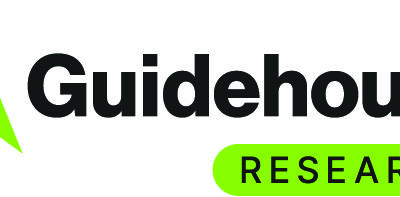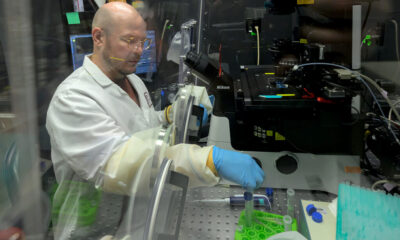Health
Novel Treatments Show Promise for Immunotherapy-Refractory NSCLC

The treatment landscape for non-small cell lung cancer (NSCLC) is evolving, with new approaches potentially offering hope for patients who have not responded to conventional immunotherapy. Dr. Hossein Borghaei, Chief of the Division of Thoracic Medical Oncology at Fox Chase Cancer Center, presented these findings during the 26th Annual International Lung Cancer Congress, highlighting novel strategies that include JAK2 inhibitors, bispecific antibodies, and cancer vaccines.
Dr. Borghaei noted that despite multiple phase 3 clinical trials failing to surpass standard-of-care (SOC) treatments for NSCLC patients who progressed after immunotherapy, emerging therapies could shift this narrative. He emphasized the importance of understanding resistance mechanisms, which can be cancer cell-dependent, immune-related, or host-related.
Insights from Recent Studies
During his presentation, Dr. Borghaei provided insights from the prospective phase 3 Pragmatica-Lung study (NCT05633602). This study examined the combination of ramucirumab (Cyramza) and pembrolizumab (Keytruda) compared to SOC treatments for stage IV or recurrent NSCLC patients who had previously undergone immunotherapy. Findings from the study, presented at the 2025 ASCO Annual Meeting, revealed no significant improvement in overall survival (OS) for patients receiving the investigational combination (n = 419) compared to those in the SOC arm (n = 419; HR, 0.99; 95% CI, 0.81-1.22; P = .46). Dr. Borghaei commented, “The OS in this study wasn’t that much better in the investigational arm vs SOC chemotherapy; perhaps this isn’t a good approach.”
In contrast, the efficacy signals from bispecific antibodies appear more promising. Data from the phase 3 HARMONi-A study (NCT05184712) demonstrated that the novel PD-1/VEGF bispecific antibody ivonescimab combined with chemotherapy improved progression-free survival (PFS) in patients with nonsquamous NSCLC. The median PFS in the combination arm (n = 161) was 7.1 months (95% CI, 5.9-8.7) compared to 4.8 months (95% CI, 4.2-5.6) in the placebo arm (n = 161; HR, 0.46; 95% CI, 0.34-0.62; P < .001). The study met its primary endpoint of PFS as evaluated by an independent radiologic review committee. Dr. Borghaei remarked that while the data derives from a different patient population—specifically those with EGFR-positive disease—the efficacy signal remains strong.
Advancements in Combination Therapies
Dr. Borghaei further discussed the results from a phase 2 study (NCT03425006) that explored the combination of JAK inhibition and anti–PD-1 therapy in NSCLC. The trial found that treatment-naive patients with metastatic NSCLC and PD-L1 levels of at least 50% who received pembrolizumab alongside the selective JAK1 inhibitor itacitinib (n = 21) achieved a 12-week overall response rate of 62%. At a median follow-up of 27.6 months, the median PFS was reported at 23.8 months (95% CI, 4.9-not applicable), with the median duration of response not yet reached. “These data show that if you time the administration of the JAK inhibitor after priming the immune system with the checkpoint inhibitor, you can have a clinical benefit,” Borghaei explained.
The potential of cancer vaccines, particularly new-generation agents, also captured attention. A phase 1 trial (NCT04911166) demonstrated that an intratumoral adenovirus–IL-12 combined with atezolizumab (Tecentriq) was safe and showed promising clinical benefits in patients with metastatic NSCLC following disease progression. With a median follow-up of 22 months, the combination (n = 12) achieved a disease control rate of 50% and a median PFS of 2 months, while the median OS was reported at 10.5 months without any grade 4 or 5 adverse effects.
Additionally, the therapeutic cancer vaccine OSE2101 is currently being evaluated against docetaxel in a phase 3 study (NCT06472245) for patients with metastatic NSCLC resistant to immunotherapy. This study is actively recruiting participants in North America and Europe, with OS as its primary endpoint. “These are going to be important studies for us to pay attention to because they could offer a potential step forward,” Borghaei stated.
Dr. Borghaei concluded by reiterating the potential role of bispecific antibodies in addressing immunotherapy resistance in NSCLC patients. “I believe something happens biologically when you engage multiple tumor antigens. Bispecifics could change the calculus. What we have now might be an incremental improvement versus the SOC, but as we learn how these drugs work and target the right antigens, it’s possible that this is going to be the way forward.” Findings from a phase 1a/1b study (NCT05460767) indicated that treatment with the first-in-class PD-1/IL-2 a-bias bispecific antibody IBI363 yielded encouraging responses in patients with advanced NSCLC who had previously undergone immunotherapy.
At a median follow-up of 11.3 months (95% CI, 10.3-11.6), patients with nonsquamous disease receiving IBI363 at 3 mg/kg (n = 31) achieved a median PFS of 9.3 months (95% CI, 6.2-11.7), while the median OS was not calculable. For patients with EGFR wild-type disease treated with the same dosage (n = 25), the median PFS was 5.6 months (95% CI, 3.1-9.4) with a 12-month OS rate of 71.6% (95% CI, 45.9%-86.6%).
The findings presented by Dr. Borghaei underscore a pivotal moment in the treatment of NSCLC, suggesting that while progress has been slow with traditional therapies, innovative strategies may provide new avenues for improving patient outcomes.
-

 Lifestyle1 week ago
Lifestyle1 week agoBelton Family Reunites After Daughter Survives Hill Country Floods
-

 Education2 weeks ago
Education2 weeks agoWinter Park School’s Grade Drops to C, Parents Express Concerns
-

 Technology2 weeks ago
Technology2 weeks agoByteDance Ventures into Mixed Reality with New Headset Development
-

 Technology2 weeks ago
Technology2 weeks agoMeta Initiates $60B AI Data Center Expansion, Starting in Ohio
-

 Lifestyle2 weeks ago
Lifestyle2 weeks agoNew Restaurants Transform Minneapolis Dining Scene with Music and Flavor
-

 Technology5 days ago
Technology5 days agoMathieu van der Poel Withdraws from Tour de France Due to Pneumonia
-

 Technology2 weeks ago
Technology2 weeks agoGlobal Market for Air Quality Technologies to Hit $419 Billion by 2033
-

 Health2 weeks ago
Health2 weeks agoSudden Vision Loss: Warning Signs of Stroke and Dietary Solutions
-

 Technology2 weeks ago
Technology2 weeks agoAnalysts Highlight Top 5 Altcoin Presales Ahead of Market Surge
-

 Technology2 weeks ago
Technology2 weeks agoTrump Faces Internal Struggles Over Epstein Files Handling
-

 Technology2 weeks ago
Technology2 weeks agoRecovering a Suspended TikTok Account: A Step-by-Step Guide
-

 Health2 weeks ago
Health2 weeks agoBacteria Navigate Gut Risks for Nutrients, New Study Reveals











